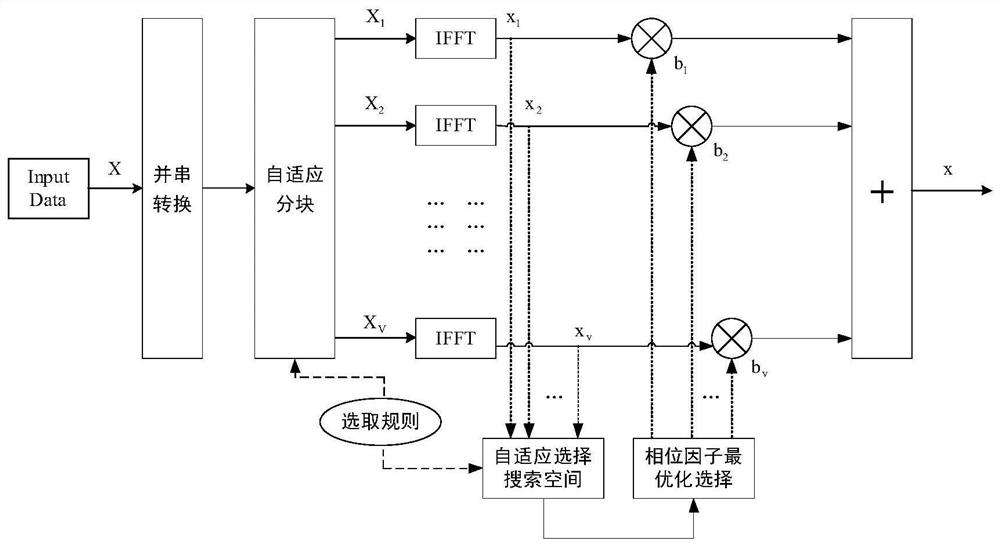An Adaptive Adjustment Method for Reducing the Signal Peak-to-Average Ratio
An adaptive adjustment and signal peak-to-average ratio technology, applied in the field of communication, can solve problems such as poor consideration of computational complexity, waste of system resources, and inability to guarantee signal power conditions, etc., to achieve improved bit error rate (BER) performance, The effect of saving system resources and reducing computational complexity
- Summary
- Abstract
- Description
- Claims
- Application Information
AI Technical Summary
Problems solved by technology
Method used
Image
Examples
Embodiment Construction
[0064] The present invention aims at the problem that the peak average power of the OFDM system is relatively high, and develops a peak-to-average ratio suppression technology for Orthogonal Frequency Division Multiplexing (OFDM) technology in an industrial reliable communication scenario, a method to reduce OFDM peak-to-average power The adaptive partial transmission sequence method of the ratio, specifically an adaptive adjustment method for reducing the peak-to-average ratio of the signal.
[0065] Below in conjunction with embodiment the present invention is described in further detail:
[0066] An adaptive adjustment method for reducing the signal peak-to-average ratio, comprising the following steps:
[0067] (1) Perform serial-to-parallel conversion and IFFT processing on the data stream to obtain a time-domain signal;
[0068] In order to recover the time-domain signal better, here for N modulation symbols X=[X 0 ,X 1 ,...,X N-1 ] T Using oversampling processing, ...
PUM
 Login to view more
Login to view more Abstract
Description
Claims
Application Information
 Login to view more
Login to view more - R&D Engineer
- R&D Manager
- IP Professional
- Industry Leading Data Capabilities
- Powerful AI technology
- Patent DNA Extraction
Browse by: Latest US Patents, China's latest patents, Technical Efficacy Thesaurus, Application Domain, Technology Topic.
© 2024 PatSnap. All rights reserved.Legal|Privacy policy|Modern Slavery Act Transparency Statement|Sitemap



